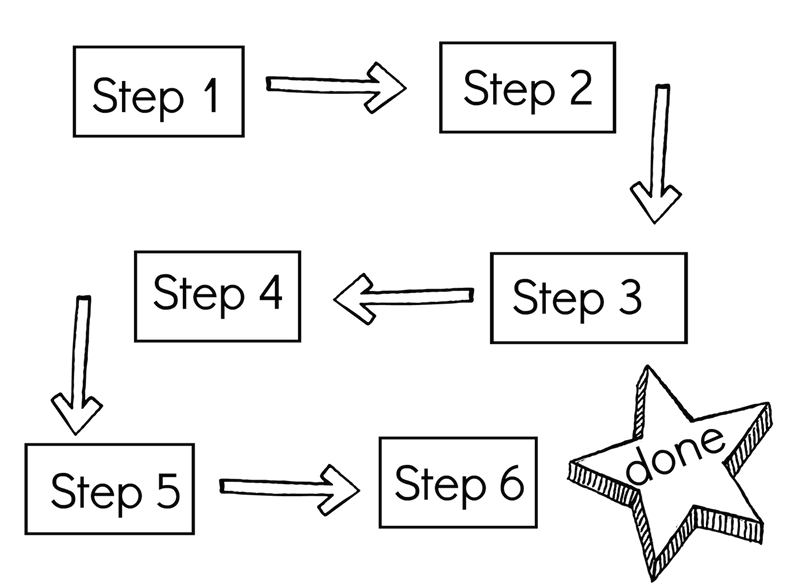
The very first step for creating systems and processes in your business that will help you scale and grow (and therefore, create freedom) is Taking Inventory.
Step 2 of 3 for creating systems and processes in your business: Writing out the steps
Once you’ve taken that first step, you should have a clear picture of the types of tasks that help your business run and that you probably work on regularly. Now, it’s time to take it to the next level and actually start writing out the steps for each of the processes you want to create.
Welcome to Step 2 for creating systems and processes in your business!
Step 2: Writing out steps
So I’ll go ahead and continue the conversation I was having with my accountability partner from Step 1…
Once we had chatted about taking inventory, she said, “Ok, this is great – but now that I have this long list of alllll the things I do in my business, how do I know where to start? Which task should I take with me on to Step 2?”
Great question.
Now that you have a clear picture of everything you work on in your business that helps it actually run, it’s time to step back and ask yourself these three questions:
1. “Which of the tasks on this list are the BIGGEST pain for me to complete?“
2. “Which of the tasks on this list are the ones I LOATH doing, simply because I feel like I’m recreating the wheel every – single – time I do them?“
3. “Which of the tasks on this list can make the biggest impact in my business?“
Answering these questions will help you start to put some priority around the tasks that will help make the biggest impact in your business once you’ve created a process around them.
Are you ready to choose just ONE task from your list that you KNOW can be completed more efficiently, and that you KNOW can make a huge impact in your business?
Perfect – now it’s time to take that task and say, “Ok, if I do _______ weekly/daily/monthly, what does it actually look like when I do that?”

How to write out the steps
Now that you’ve chosen just ONE task from your list, set aside 30 minutes and pretend you’re about to do that task. Don’t wait for the next time you do something to write out the steps, because chances are you’ll be too time crunched and focused to write them out.
Have a sheet of paper or some type of note-taking software by you and write out the steps – in detail – that you take when you perform that task.
Let’s say the task from my list was “managing live webinars”.
In Step 2, I’m going to write out the steps that I take every time we do a live webinar.
By giving myself about 30 minutes one day to pretend I was about to do a webinar – no pressure, no time crunch – I was to come up with a thorough pre- and post-webinar checklist to “review” the next time I was actually doing a webinar to make sure I hadn’t forgotten any steps.
Now I keep these checklists in Workflowy so every time I do a webinar, I don’t have to worry about missing any of the pre- or post-webinar steps.
Once you start writing out the steps, you’ll realize how many things you do every time you perform a task. For example, my pre-webinar checklist included a lot more than I expected because I’d never taken the time to actually write out the steps:
- Select a date & time
- Create opt in page
- Create thank you page
- Create campaign
- Set email reminders in campaign
- Link opt in page with campaign
- Create live Webinar page
- Create replay page
- Set up social media sharing
- Set up ads (if applicable)
Once you know every step that goes into actually accomplishing or completing a task, you’ll be able to start determining efficiencies, which is Step 3 of 3 for creating systems and processes in your business.
